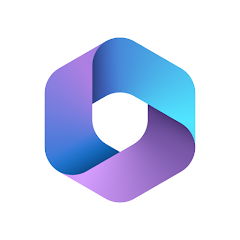How Asana Can Improve Your Task Management Skills
15th November 2024
Jeff Patton
Are you in search of a tool that can enhance your organizational abilities and assist you in managing your tasks and projects effectively?
Analyze how the platform Asana can elevate your task management skills by facilitating the organization of tasks and projects, fostering collaboration with team members, establishing deadlines, prioritizing tasks, monitoring progress, and ultimately, enhancing overall productivity.
Delve into the fundamental features of Asana, learn how to utilize it efficiently for task management purposes, and recognize the advantages it can introduce to your workflow.
If your objective is to streamline your task management procedures and elevate your productivity levels, continue reading to acquire further insights into the capabilities of Asana.
What Is Asana?
Asana serves as a robust task management tool and project management platform meticulously crafted to assist teams in organizing tasks, managing projects, and fostering productivity by enabling efficient task assignment, monitoring, and collaboration.
Through the provision of a user-friendly interface and advanced functionalities such as customizable project boards, task deadlines, and priority settings, Asana supports the seamless planning and execution of projects. Teams can meticulously outline project timelines, establish dependencies, and allocate resources in an efficient manner, ensuring alignment among all team members.
Asana also offers real-time updates and notifications, allowing team members to remain abreast of project progression and deadlines. The capability to integrate Asana with various tools and platforms further amplifies its functionality, rendering it a versatile solution catering to a broad spectrum of project management requirements.
How Can Asana Help Improve Task Management Skills?
Asana has the potential to enhance task management skills substantially by offering a structured platform for task organization, improving communication, and optimizing workflows. This, in turn, can lead to increased productivity and facilitate the efficient completion of projects.
1. Organize Tasks and Projects
Asana offers users a comprehensive set of tools designed to facilitate effective organization of tasks and projects. By incorporating features for task delegation, scheduling, and prioritization, Asana ensures that all team members are well-coordinated and informed of their respective responsibilities.
Within Asana, the task delegation function give the power tos team members to assign specific tasks to individuals, thereby streamlining workflow processes and enhancing clarity regarding roles and duties. The scheduling feature aids in establishing deadlines and creating a structured timeline for project completion, ensuring that all team members remain aligned and informed about project milestones. Additionally, the prioritization tools enable users to categorize tasks based on their urgency or importance, facilitating a focus on critical tasks. Together, these functionalities contribute to fostering clarity and efficiency within a team, promoting collaboration, and ultimately enhancing overall productivity.
2. Collaborate with Team Members
Asana facilitates seamless collaboration among team members through its provision of tools for real-time communication, file sharing, and progress tracking. These functionalities serve to enhance teamwork and ensure alignment among team members.
The real-time communication features within Asana enable team members to engage in discussions, exchange ideas, and provide prompt updates, thereby fostering immediate feedback and facilitating constructive dialogue. Furthermore, the file sharing capabilities offered by Asana allow for expedient access to pertinent documents, images, and files, thereby eliminating the need to sift through numerous emails or shared drives. Lastly, the progress tracking tools provided by Asana offer visibility into project milestones, deadlines, and individual tasks, enabling team members to maintain organization and remain informed about the project's status. Collectively, these features serve to increase overall productivity within the team.
3. Set Deadlines and Prioritize Tasks
Asana serves as a valuable tool for team collaboration, facilitating the establishment of clear deadlines and effective task prioritization techniques. This ensures that critical tasks are completed in a timely manner and that resources are allocated efficiently.
Through the utilization of Asana's deadline feature, team members have the ability to assign specific due dates to tasks, thereby establishing a structured timeline for project completion. The platform's task prioritization tools give the power to users to identify and emphasize key tasks, guaranteeing that the most crucial activities receive the necessary attention. For instance, a marketing team can leverage Asana to set deadlines for upcoming campaigns, prioritize tasks such as content creation and social media engagement, and oversee progress across team members to ensure the successful achievement of campaign launch dates.
4. Track Progress and Productivity
Asana facilitates teams in monitoring their progress and efficiency through the provision of comprehensive reports and visualizations. These tools are instrumental in pinpointing bottlenecks and areas necessitating enhancement within the task management process.
The utilization of Asana's reporting and visualization features equips team members with invaluable insights into their work patterns, task completion rates, and overall productivity levels. These resources enable teams to oversee their performance in a real-time setting, ensuring alignment with objectives and the timely accomplishment of deadlines. Asana's graphical representations of data serve to simplify intricate information for team members, aiding in their ability to make well-informed decisions aimed at streamlining workflow processes. Encouraging a data-centric approach, Asana give the power tos teams to effectively prioritize tasks, allocate resources judiciously, and ultimately elevate productivity levels organization-wide.
What Are the Key Features of Asana?
Asana provides a diverse array of essential features meticulously crafted to elevate task management and project management processes. These features include task assignments, customizable dashboards, and seamless integration with various tools. Collectively, these capabilities form an integrated and robust solution tailored for teams seeking to enhance their workflow efficiency and overall productivity levels.
1. Task Assignments and Subtasks
Asana facilitates the creation of task assignments and subtasks, ensuring clear delineation of responsibilities for each team member and effective workload management.
The platform allows tasks to be segmented into smaller, more digestible components, thereby improving organization and transparency within a team. Subtasks enable team members to concentrate on distinct project elements, fostering a sense of ownership and accountability. The capacity to designate deadlines and dependencies to tasks and subtasks aids in prioritizing work and ensuring a smooth workflow. Through its features, Asana give the power tos users to monitor progress, collaborate effectively, and streamline task management processes to maximize productivity.
2. Customizable Dashboards and Views
Asana provides users with the ability to tailor their workspace according to their preferences and requirements through customizable dashboards and views. This feature enhances the efficiency of task organization and management.
Users have the flexibility to personalize their dashboards by selecting the layout, color schemes, and the specific information to be displayed. This customization give the power tos users to view their tasks and projects in a manner that suits their individual preferences. The ability to personalize one's workspace not only cultivates a sense of ownership but also enhances productivity by offering a clear and concise overview of current priorities and progress. By leveraging Asana's customization options, users can effectively categorize, prioritize, and monitor tasks, ensuring that no task is overlooked and that deadlines are met in a timely manner.
3. Integration with Other Tools
Asana seamlessly integrates with various tools, such as Slack, Google Drive, and Microsoft Teams, which allows users to consolidate their workflow and streamline their task and project management processes effectively.
Through integration with these widely utilized platforms, Asana promotes a cohesive work environment that facilitates easy access to pertinent information, efficient communication, and real-time collaboration among team members. This integration significantly diminishes the necessity for switching between multiple applications continuously, thereby conserving time and minimizing the risk of miscommunication. Moreover, Asana's integration capabilities extend beyond communication tools to encompass project tracking, file storage, and reporting functionalities, offering a comprehensive solution for proficiently managing tasks and projects.
How to Use Asana for Effective Task Management?
To optimize task management using Asana, commence by establishing a project and dividing it into actionable tasks. Subsequently, delegate these tasks to team members, establish deadlines, and leverage Asana's labeling and filtering capabilities to maintain organization and monitor progress with efficacy.
1. Create a Project and Tasks
Commence the project by initiating a task in Asana and dividing it into smaller, more manageable tasks to ensure precision and concentration. By dissecting the project into smaller tasks, not only does it simplify the overarching objective, but it also facilitates superior organization and distribution of work among team members.
Each task transforms into a manageable entity that can be assigned, monitored, and executed efficiently. This method heightens transparency, as all involved individuals can distinctly discern their obligations and deadlines, resulting in enhanced cooperation and responsibility.
The segmentation of tasks aids in averting feelings of being overwhelmed by a intricate project, as concentrating on one task at a time encourages productivity and instills a feeling of achievement.
2. Assign Tasks and Set Deadlines
It is imperative to assign tasks to appropriate team members and establish clear deadlines to promote accountability and ensure the timely completion of each task. This process of task allocation and deadline setting within Asana plays a crucial role in enhancing team collaboration and project management efficiency.
By assigning tasks to team members based on their individual skills and expertise, Asana ensures that each team member is engaged in responsibilities that align with their strengths. Setting explicit deadlines also plays a pivotal role in enabling team members to comprehend the urgency and priority of each task, motivating them to concentrate on completing their assignments promptly.
These functionalities not only cultivate accountability within the team but also facilitate progress tracking and prompt attainment of project milestones.
3. Use Labels and Filters for Organization
The utilization of labels and filters in Asana serves as an effective method to categorize and systematically arrange tasks, facilitating the tracking of progress and efficient workload management.
Labels and filters within Asana offer a straightforward yet robust approach to prioritizing and segmenting tasks, thereby aiding in directing attention to tasks that require immediate action. By assigning specific labels such as 'priority', 'in progress', or 'completed', individuals can readily visualize the status of each task in a concise manner.
Filters allow for the swift narrowing down of tasks based on criteria such as due dates, assignees, or projects, thereby streamlining workflow processes. This structured level of organization not only boosts productivity but also ensures that no task goes unnoticed or overlooked.
4. Utilize Asana's Communication Tools
Leverage the communication tools provided by Asana to facilitate discussions, provide updates, and share files among team members, ensuring a well-informed and engaged team.
The suite of communication tools available within Asana, including features like task comments, messaging functionalities, and seamless file attachments to tasks, are pivotal in nurturing collaboration and driving effective task management within teams. Utilizing the comment section enables team members to easily offer feedback, pose questions, and engage in project discussions all within a centralized platform. The messaging feature allows for prompt communication, enabling real-time updates and addressing urgent inquiries. Moreover, the capability to attach files directly to tasks eradicates the need to search for pertinent documents, thereby enhancing efficiency, saving time, and optimizing workflows.
What Are the Benefits of Using Asana for Task Management?
Leveraging Asana for task management offers a myriad of advantages, such as:
- Heightened efficiency and productivity
- Enhanced communication and collaboration
- Superior organization and task prioritization
- Improved accountability and progress tracking
All of which collectively contribute to the successful completion of projects.
1. Increased Efficiency and Productivity
Asana enhances efficiency and productivity through the optimization of task management processes, enabling teams to concentrate on their core responsibilities and expedite task completion.
Through Asana's user-friendly interface and collaborative tools, team members can efficiently assign tasks, establish deadlines, prioritize work, and monitor progress in real-time. This consolidated platform eliminates the necessity for extensive email threads and unnecessary meetings, facilitating smooth communication and decision-making processes.
By establishing clear task assignments and deadlines, teams can circumvent confusion and procrastination, ensuring the punctual and precise completion of projects. Consequently, teams can enhance their productivity levels, achieve superior outcomes, and ultimately enhance success rates and satisfaction levels.
2. Improved Communication and Collaboration
Asana enhances communication and collaboration through its array of tools that facilitate real-time updates, file sharing, and centralized communication. These features ensure alignment and information dissemination among all team members.
Team members can conveniently share crucial project updates, deadlines, and progress reports utilizing Asana's real-time update functionality. By being able to collaborate on files directly within the platform, team members can effectively work together on various documents, spreadsheets, and presentations. The centralized communication hub provided by Asana functions as a digital workspace where team members can engage in discussions, provide feedback, and exchange essential information, thereby fostering a more united and efficient work environment.
3. Better Organization and Task Prioritization
Asana serves as a tool for enhancing organization and task prioritization by providing users with the capability to categorize tasks, establish priorities, and establish a structured framework for their projects.
By organizing tasks into categories, users can effectively distinguish between different facets of their projects, facilitating the allocation of time and resources in a more efficient manner. Setting priorities within Asana allows individuals to direct their attention to urgent tasks first, ensuring that deadlines are met proficiently.
Furthermore, creating a well-defined project structure in Asana enables teams to visualize the workflow, monitor progress, and collaborate seamlessly. This methodical approach not only improves productivity but also fosters improved communication and teamwork among team members.
4. Enhanced Accountability and Tracking
Asana serves to enhance accountability and tracking capabilities through its provision of tools for task assignment, deadline setting, and progress monitoring. These functionalities aid in ensuring that team members remain aligned with project objectives and milestones.
The task assignment feature within Asana enables team members to clearly delineate their responsibilities within a project, promoting the efficient distribution of work among team members. Additionally, the ability to set deadlines in the platform fosters a sense of urgency and facilitates the prioritization of tasks based on their significance. Through the monitoring of progress within Asana, team leaders can gain real-time insights into task statuses, identify potential bottlenecks, and offer necessary assistance to maintain project momentum. Collectively, these features contribute to heightened performance and accountability levels within teams utilizing Asana.















